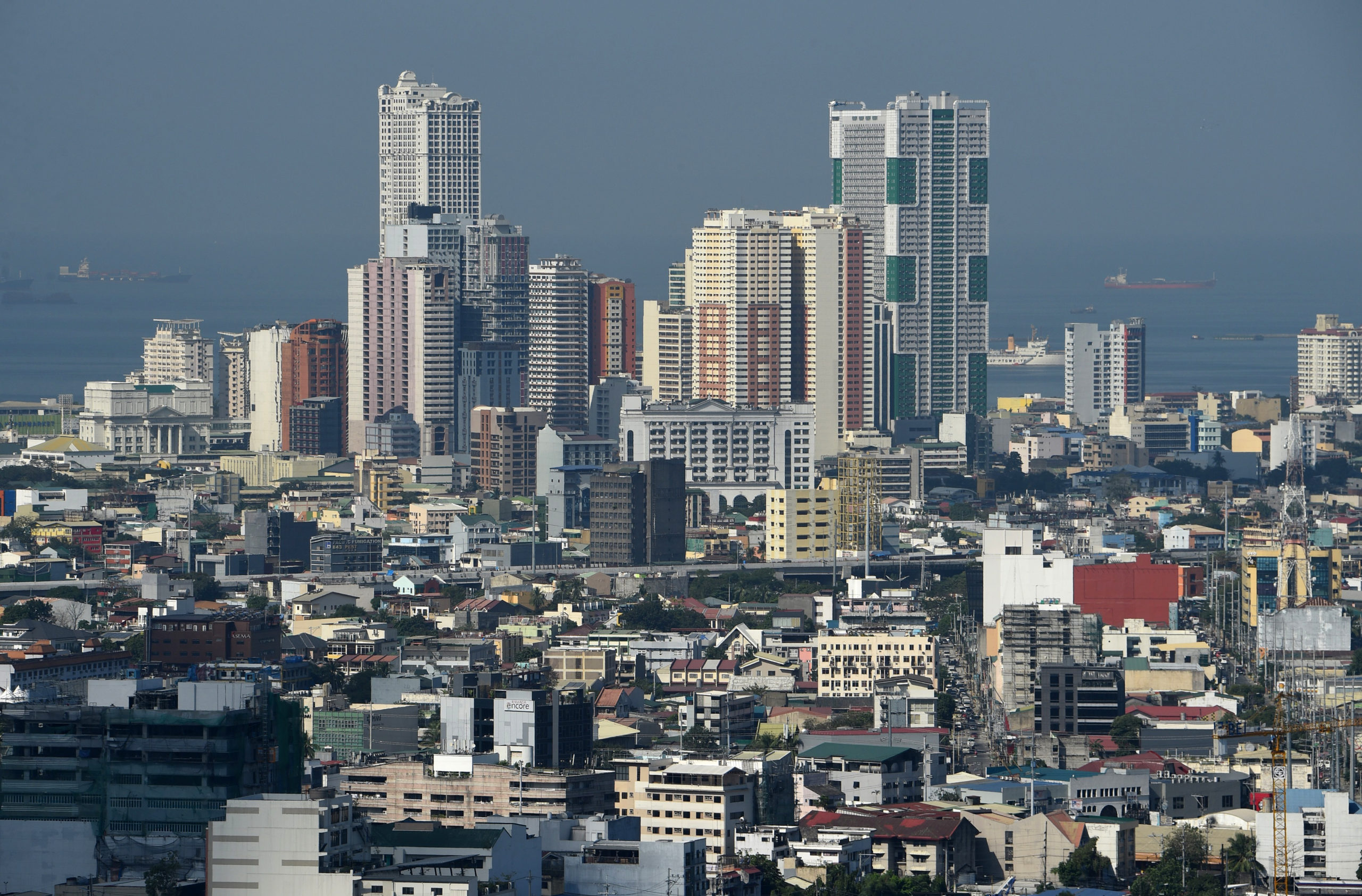
The Philippines may not hit its goal of at least a 6-percent growth in the economy in 2025, no thanks to the global trade war. Photo by Ted ALJIBE / AFP
MANILA, Philippines – The Philippine economy might not be able to muster a 6-percent growth this year if its major trading partners would significantly slow down amid the tariff war, and if global supply disruptions due to geopolitical risks would stoke inflation.
In its latest report released on Tuesday, the Asean+3 Macroeconomic Research Office (Amro) said the local economy would likely grow by 6.3 percent this year, unchanged from its forecast back in January.
But Amro said that projection had been finalized before the April 2 “Liberation Day” announcement of President Donald Trump, who unveiled higher tariffs on trading partners of the United States. Recall that Trump had slapped a 17-percent tax on Filipino goods coming to America, although he later announced a 90-day pause on his sweeping tariffs.
At a press conference, Allen Ng, group head and principal economist at Amro, said the Philippines would be negatively impacted by the increased trade protectionism.
“Given the fluidity of the situation, we will be updating our baseline in the coming months,” Ng said.
“For now, our various scenarios of tariff actions, as per the Liberation Day and pause scenarios, growth in the Philippines will be negatively affected and likely will fall below 6 percent,” he added.
Amro provided more explanation in its report. The regional surveillance organization said the local economy could be “challenged” by a sharp slowdown of major trading partners. And this is expected to be felt via merchandise and services trade, tourist arrivals, remittances and foreign investment inflows.
“Heightened geopolitical risks could increase the likelihood of global supply disruptions that cause another round of upward inflation pressures, as well as further global economic fragmentation,” it added.
Potential growth
A day before Amro released its flagship report, Secretary Arsenio Balisacan of the National Economic and Development Authority admitted that the government’s best growth estimate of 8 percent might not be realistic at this point because of significant uncertainties.
But Balisacan was still confident that the economy could grow by at least 6 percent this year.
Moving forward, Amro said the Philippines would be one of the best performers in Southeast Asia in the next two decades if it could enact key reforms meant to boost productivity and close the infrastructure gap.
“The Philippines, we are categorizing it as a middle-stage economy. One of the key factors that could actually improve the Philippines’ potential growth is actually productivity,” Ng said.
“In fact, in our simulation, we showed that the Philippines would get another above-2 percent growth if some of these reforms are implemented. So, we are not looking at 3.5 percent [potential growth by 2040], we are looking at closer to 5.5 percent to 6 percent,” he added. INQ



